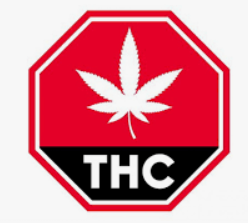
The Intersection Between Trademarks and Labelling Laws: An Illustration in the Cannabis Industry in Canada

The selection and lawful use of trademarks is affected by not just trademark laws, but many other statutes. The Trademarks Act contains specific prohibitions on the use and registration of marks that offend the rights of public authorities and government agencies, as well as registration of marks that are names, clearly descriptive, generic and confusing with prior used and registered marks. However, using examples in the nascent recreational cannabis industry, it is important to consider the many other Canadian laws and regulations that impact the selection of trademarks, and long term branding and enforcement.
The legalization of recreational cannabis on October 17, 2018 in Canada provides an illustration of the intersection between trademarks and labelling laws. The Cannabis Act and Regulations set out very specific rules about packaging and labelling of “cannabis products” and “cannabis accessories”, both of which are defined terms. (This paper does not address the rules regarding cannabis for medical access.)
To begin to understand this intersection, it is important to understand the purpose of the Cannabis Act, which is to uphold public safety and to protect young persons, generally defined as anyone under the age of 18. This means, in part, that there can be no inducements to use cannabis products. To further the purpose, sections 26 and 27 of the Cannabis Act broadly prohibit labels, and by inference, branding that: appeals, on a reasonable basis, to young persons; sets out a testimonial or endorsement, however displayed or communicated; depicts a person, character or animal, whether real or fictional; that evokes a positive or negative emotion about a way of life; or that contain any information that is false, misleading or deceptive or creates any erroneous impression about the performance, safety, etc. of the product.
Some of these prohibitions seem clear, such as that relating to the display of characters or animals. Obviously, Canada will not harken back to the early days of tobacco with “JOE THE CAMEL” or similar. But others are more subjective, leading to potential uncertainty. Does a license from Willie Nelson to use a song title as a brand name of a cannabis product constitutes an implied endorsement, even if it does not specifically “depict” or name Willie Nelson? What “on a reasonable basis” is appealing to a young person? What evokes a positive or negative image about a way of life? To date, Health Canada, responsible for enforcing the Cannabis Act, has not offered any labelling guidelines beyond the publication of two compliant sample labels showing where and how the two permissible brand names/elements may appear, and has not given any examples of what brands would be acceptable.
The Regulations set out requirements for labels for cannabis products, including the “brand name”, with limitations on its presentation, such as type size (e.g. smaller than or equal to a mandatory health warning message) colour (e.g. not be in a colour that has the lustre of metal or metallic properties or be fluorescent), and that brand names can be displayed only once on the principal display panel.
In addition to “brand name”, only one other “brand element” is permitted on the principal display panel. Brand elements are broadly defined to include: “a brand name, trademark, tradename, distinguishing guise, logo, graphic arrangement, design or slogan that is as associated with or evokes cannabis, a cannabis accessory, a service related to cannabis or any brand thereof”. The second brand element can be displayed only once on the principal display panel, and again, has restrictions similar to the “brand name” regarding size (relative to other mandatory information), colour and lustre, etc.
Other restrictions will affect trademarks with design features. If a cannabis product contains THC in a concentration greater than 10 μg/g, the standardized cannabis symbol, shown below, must appear on the label. The size, placement, orientation and colouring are all prescribed by the Regulations. The Regulations also prohibit representations, such as an illustration, sign, mark, symbol or design, that “so closely resembles the standardized cannabis symbol that it is likely to be mistaken for that symbol”, and “likely to cause confusion” with the standardized symbol. The breadth of the prohibition potentially means that trademarks containing any representation of a cannabis leaf could be offside.

In addition to labelling, the Cannabis Act contains prohibitions on consumer promotions of cannabis products, cannabis accessories and related services that mirror the labelling prohibitions, namely are appealing to young persons, or contain a testimonial or endorsement, depict a person, character or animal, or evoke a positive or negative emotion about a way of life.
“Promotions” are very broadly defined to mean “to make, for the purpose of selling the thing or service, a representation — other than a representation on a package or label — about the thing or service by any means, whether directly or indirectly, that is likely to influence and shape attitudes, beliefs and behaviours about the thing or service”. While the distribution of educational materials about cannabis might be excluded, if they found to “influence” behaviour, then the prohibitions will apply. These prohibitions (ss. 16(c) and (d) of the Act) do not apply to promotions by licensed cannabis producers, sellers or distributors directed to other licensees, and not the consumer, either directly or indirectly. This means marks that are prohibited for use on labels may be used in promotions between licensed entities.
Filing for Cannabis Marks
Since there are many benefits of trademark registration, cannabis brand owners may still want to protect brands that they reasonably intend to use, either on cannabis, or other promotional or related products, even if such brands might not clearly comply with cannabis branding laws. One significant legislative change leans in favour of filing. Amendments to Canada’s Trademarks Act , passed but delayed for years, will finally come into force on June 17, 2019. One of the most significant changes is that use as a registration requirement will be eliminated in Canada. Under the existing regime, marks can be registered only once in use, with no special dispensation for marks that cannot be used because of legislative or regulatory restrictions. Eliminating this use requirement will make it possible for applicants to register a mark if they intend to use it (leaving, for now, how to establish ‘intent’ if challenged).
Another point in favour of filing is that whether a mark may be legally used, for example, because it offends the Cannabis Act, is not an issue that will be raised in examination before the Trademarks Office. This means that any legislative restriction on the ability to “use” a mark will not prevent an applicant from obtaining a registration. Cannabis trademarks must still meet ordinary registrability rules, for example, they may not be clearly descriptive, generic, or confusing with other filed or registered marks, but unless challenged by opposition, a cannabis mark that might offend the Cannabis Act will not be rejected during examination.
That is not to say filing is risk free or a registration is a certainty. Notably, applications have in the past been successfully opposed on the basis that the applicant’s use was contrary to federal laws, and thus the applicant could not be satisfied that it was “entitled” to use the trademark in Canada. It is too early to tell if cannabis applications could be refused on the basis that they are either of a type not permitted, or not allowed to be displayed on goods due to Cannabis Act or Regulation restrictions.
Despite registrability concerns, filing for both a broad range of cannabis marks, and a variety of goods and services might be prudent since regulations may change over time. While the Government might justify a restrictive approach at launch, over time, such restrictions might be relaxed, especially since many seem to be at odds with requirements in other jurisdictions where cannabis sales have been legalized.
Cannabis Registrations
Cannabis registrations seem to be excluded from summary non-use cancellation proceedings that apply to all other registrations. Specifically, after a registration’s third anniversary, it normally becomes vulnerable to a non-use challenge that may result in cancellation if the registered mark has not been used in Canada in the three years before commencement of the proceeding. However, the Cannabis Act has a “saving” provision (s. 136(2)), that states that the absence of use of a trademark as a result of compliance with the Cannabis Act constitutes special circumstances that excuse non-use for the purposes of the Trademarks Act.
This creates a unique class of registrations – ones that a cannabis company might claim it cannot use because use is contrary to the Cannabis Act, but cannot be cancelled due to the “saving” provisions in the Cannabis Act. Additional proposed amendments to the Trademarks Act in Bill C-86, just introduced in October 2018, appear to limit the ability to enforce registrations in the first 3 years following registration, unless there is use of the mark in Canada “or special circumstances to excuse non-use”. Logically, it would seem that compliance with the Cannabis Act amounts to special circumstances for the purposes of enforcement, but Bill C-86 and the Cannabis Act are not so expressly worded. Other legal remedies, such as passing off, depend on “use”, and there are no saving provisions for that tort.
Given the Cannabis Act was only recently passed, there are still many questions for which there are no readily apparent answers. However, all brand owners involved in producing, selling or distributing will need to keep these restrictions in mind as they roll out their businesses, and make brand choices in this new and exciting market.
A version of this article was first published in World Trademark Review issue 77, published by Globe Business Media Group – IP Division. Please go to www.WorldTrademarkReview.com.

